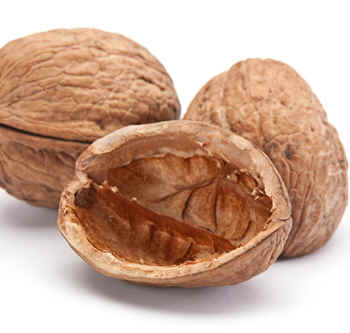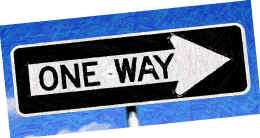The Gospel for Kids in a Nutshell
Six lessons based on John 3:16

- Your support makes this resource possible! Give now.
New International Version
John 3:16 - "For God so loved the world that he
gave his one and only Son, that whoever
believes in him shall not perish but have
eternal life."
King James Version
John 3:16 - "For God so loved the world, that he
gave his only begotten Son, that whosoever
believeth in him should not perish, but have
everlasting life."
Lesson One Overview
Objective: To help
children understand and memorize John 3:16, "the
gospel in a nutshell." There is enough material from each lesson to fill approximately 30 minutes per class period.
(For K-5th grade)
The word gospel means, "Good News." When
people hear the word gospel, they often think of the first four books of the
Bible in the New
Testament: Matthew, Mark, Luke, and John. These four books are
known as "the Gospels." They're called this because they contain some
really good news about our Savior, Jesus! But the gospel message is more than Jesus dying on a cross and rising from
the dead to forgive our sins; it is that, but it is
much more than that! The Gospel is an Old Testament* promise that God would
reclaim, restore, and push back the curse of sin and death, in order to establish his
rule and reign on earth, as it is in heaven. We live in the already
and not yet of God's Kingdom rule. As God's children, we wait with expectant hope for Jesus to
return to Earth someday to establish a new Heaven and a New Earth.
*See Is. 52:7, 61:1; Na. 1:15. You might spend some time defining the terms,
reclaim, restore, and push back. To reclaim is to take back what is
yours, to redeem or save. To restore is to bring back to the original
condition, bring back to life, and push back, is to push against the
results of sin and it's destructive force.
Song Time: John 3:16 Rap
(Sung in military cadence style with first line sounded off by the teacher, and second line echoed by the class.)
John 3:16,
John 3:16
For God,
For God,
For God so loved the world.
For God so loved the world.
That he gave,
That he gave,
He gave his only Son.
He gave his only Son.
That whosoever believes in him,
That whosoever believes in him,
Shall not DIE!
Shall not DIE!
(Repeat)
Today, I want to read one of the Bible's most well-known verses (open a Bible and read John 3:16).
John 3:16 is essentially the gospel in a nutshell—it explains the entire Bible. This verse condenses God's
entire plan from the beginning of time and throughout Scripture, into this tiny "nutshell" of a verse.
As stated before, the word gospel means, "good news," which implies
there is bad news. What do you suppose is the bad news? (We are separated from
God because of our sins, but we'll learn about that in our next lesson).
Let's look at this well-known verse again; what good news does it contain?
(Allow for discussion, and possible answers: God loved, he gave, not dying, given eternal life.)
John 3:16 is such a popular and important verse that many Christians create giant banners of the verse address and then hang the banners from the rails in sports stadiums for others to see. Maybe you've seen them? (Show pictures if possible.) Why do you think they do this? They do this because they want other people to know the good news about
Jesus too!
Pray
Craft Activity
Children make their own set of John 3:16 Gospel Pictograms.
Optional idea: Have children create a large John 3:16 banner to hang in classroom or outside of your church building for passersby to see.
Lesson Two: "For God so loved the World . . ."
Sing the John 3:16 Rap
Read a condensed version of the creation story from a child-friendly Bible or tell it in your own words.
(You can also use the Creation to Cross Totem Pole
to show and tell the creation story.)
When God created the world and everything in it, he said that it was good.
God spoke everything into existence. It was a perfect place without sin. Sometime later,
though, something terrible happened that
affected the rest of the world forever. Adam and Eve were tempted by Satan to disobey God.
Their disobedience brought God's punishment, which is death—on themselves and all future generations of people.
Their sin also cursed all of creation: "Cursed is the ground because of you.
. . " Genesis 3:17. This is the bad news we spoke about last lesson, and
this is why we need good news!
Yet, even though Adam and Eve disobeyed God, he still loved them. God had a plan from the beginning of time to save
them and all those who would
put their trust in him. In Genesis 3:15, in the first book of the Bible, we hear
the first bit of good news to reclaim, restore, and push back the effects of
sin. God told Satan that he would send Someone to crush him. Someday, even the creation will be freed from death and decay (Romans 8:21-22). We live in the already and not yet of God's kingdom.
But God is working to restore the earth to its original perfection, and to establish his rule on earth as it is in heaven,
this is the true gospel.
When Jesus began his ministry he said, "The time has come, the kingdom of God has arrived; repent and believe the good news" (Mark 1:15). Jesus died on the cross and rose from the
dead. He wants us to repent, that is turn from our sins and follow him. But the gospel
story will not be fully complete until Jesus comes again. In that day he has promised a new heaven and a new earth to all those who trust in him!
Pray
Craft Activity: Children make the Creation to Cross Totem Pole
(Older children can use the pattern as a guide to draw and paint the Creation to
Cross story on a plank of wood.)
Lesson Three: ". . . that he gave his one and only Son . . ."
Sing the John 3:16 Rap
Do you remember from our last lesson how God created the world? (He spoke it into existence.)
Read John 1:1-3 and vs. 14 from a child-friendly Bible.
Discuss the following:
What does this verse say about the Word? (The Word* is from the beginning, was with God, and is God.)
What else does this verse tells us about the Word? (Through him all things were created. Nothing was created without him, vs. 3.)
What happened to the Word? (The Word became flesh, a human-being, vs. 14.)
Who is this "human-Word"? (The Bible says the Word is Jesus, vs. 17.)
These verses from the Gospel of John teach us that Jesus is God. He is God in the flesh! He is the second
person of the Trinity: "God the Father, God the Son, and God the Holy
Spirit." God became a human-being and lived on earth. John 3:16 tells us
why he did this: "God so loved the world, that he gave his only Son . . ."
Do you recall what God told Adam and Eve was the punishment for sinning? The punishment is death. Not only physical death, but eternal death and separation from God. Yet, God knew that we could not save ourselves.
He became a human-being to save us. He came to earth to take our punishment. He came to die in our place so we could live eternally
with God, and not eternally separated from God!
Jesus said, "I am the way and the truth and the life. No one comes to the Father except through
me" (John 14:6).
Pray
Play the One Way Game. Click here.

Lesson Four: ". . . that whoever believes in him . . . "
Sing the John 3:16 Rap
The Bible says, whoever believes in Jesus, will not perish but have eternal life.
Many people, possibly most people, believe there is a God. But the Bible says that even the demons (Satan's angels), believe in God,
but they do not and will not live in heaven with God (James 2:19)! So what kind of belief do you think God wants from us? What does it mean
to believe in him? (Receive answers.)
Trust Chair Illustration
Place a chair at the front of the room. Invite a volunteer to come forward. Ask,
"Do you believe the chair can hold you up?" Point out that the only way you can know for sure that the chair can hold you up is by sitting in it.
You can know in your head that the chair is real. You can think that it is strong enough to hold you up, but until you actually sit on it,
only then do you go from believing in your head, to trusting that it can hold you up.
In the same way, believing in God is more than just knowing that he exists. To believe in God means to trust him, to lean on him,
to rely on him, to understand that you have no hope apart from him and his work on the cross to pay the penalty for your sin. When you put faith in action by trusting Jesus with your life, both here and in eternity, only then do you have true, believing faith!
Pray
Craft Activity: Trust Chair

Copy pattern, above, onto heavy, white card stock paper. Have children draw a picture of themselves sitting in the "trust chair" and then color it with colored pencils.
Use it for a bookmark or glue a magnet on the back for a home reminder.
Lesson Five: ". . . shall not perish...but have eternal life."
Sing the John 3:16 Rap
When we trust in Jesus, relying on him alone, the Bible says we will not perish. What does it mean to perish? (It means we will not die.) We die physically because of sin. When Adam and Eve sinned, death resulted for all mankind and all of creation. But this verse tells us that we will not perish or die eternally when we trust in Jesus.
All of us will live eternally, either in God's presence or separated from him. When Jesus died on the cross, he did not remain in the grave. He rose from the dead. The Bible tells us that he is the firstborn from the dead. Adam and Eve brought sin and death, but Jesus gives us forgiveness and
eternal life (1 Corinthians 15:22).
Today's craft activity reminds us that Jesus is no longer on the cross. He rose from the dead to give us eternal life!
Craft Activity: Make a Match-stick Cross
Younger children can make a Mosaic
Cross.
Lesson Six: John 3:16 and beyond: The Choice.
Sing the John 3:16 Rap
The verse immediately following John 3:16 says, "For God did not send his Son into the world to condemn the world, but to save the world through
him" (John 3:17).
When the Bible speaks of condemning people, it means to find them guilty of breaking God's laws. The Bible says we are all guilty of sinning (Romans 3:23). John 3:17 tells us that God did not send Jesus to earth in order to find us guilty of breaking his laws. Rather, he came to earth to save all those who would trust in him. This verse shows us that a choice must be made. God demands a punishment for breaking his laws, and that punishment is death (Romans 6:23). The question is, "Who's death will pay for your sins?" When you stand before God, either you will trust
that Jesus paid your death punishment, or you will be required to die for your
sins and be separated eternally from God. The Bible says, "Today is the day of
salvation" (2 Corinthians 6:2). Trust Jesus today!
Pray
This is such great news and should not be kept to ourselves! God wants us to tell the good news about Jesus to everyone we know! You can do this by using your Gospel Pictograms
to tell others about God's great love for them!
Art Activity: Design Gospel Pictograms for John 3:17
Children can work together in small groups and draw on large sheets of banner paper or give children their own set of small poster boards to make individual sets.
Children can also make giant banners of the John 3:16 verse address and then hang the banners in front of your church for passersby to see.
Copyright 2008 Sarah A. Keith
All rights reserved
- Your support makes this resource possible! Give
now.
*For an expanded lesson series on The Word from John 1, download our Bible
Games Explosion book.

Editor recommendation for adult study: How God Became King: The Forgotten Story of the Gospels
You can make a
difference!
Your donation
to the site helps us distribute
our children's ministry resources to churches across the world.
Subscribe to our Newsletter - Learn More
